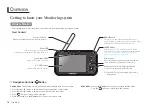
— Do not mix different types, brands, or size of batteries. This may cause damage to the product.
— Do not mix old and new batteries.
— Remove batteries and dispose of them according to the proper regulations in your area.
— Do not disassemble batteries or expose them to heat or fire.
— Do not short-circuit the batteries.
— Do not use rechargeable batteries.
1.2B Care of the Device
For prolonged life of your blood pressure monitor, note the following instructions:
• Do not drop or bang the unit. Prevent sudden jerks, jars, or shocks to the device to prevent damage.
• Do not insert any foreign objects in any device openings or vents.
• Do not disassemble the unit.
• If the unit has been stored at very low or freezing temperatures, allow it to reach room temperature
before use.
• Do not store the unit in direct sunlight, high humidity, or in places with a lot of dust.
• Clean the device with a soft dry cloth. Do not use gasoline, thinner or similar solvents. Carefully remove
spots on the cuff with a damp cloth and soap. Do not wash the cuff.
1.3 How do I evaluate my blood pressure?
Table for classifying blood pressure values in adults in accordance with the World Health Organisation (WHO) in
2003. Data in mmHg
Range
Systolic
Diastolic
Recommendation
blood pressure
too low
100
60
Consult your doctor
1
blood pressure
optimum
100 - 120
60 - 80
Self-check
2
blood pressure
normal
120 - 130
80 - 85
Self-check
3
blood pressure
slightly high
130 - 140
85 - 90
Consult your doctor
4
blood pressure
too high
140 - 160
90 - 100
Seek medical advice
5
blood pressure
far too high
160 - 180
100 - 110
Seek medical advice
6
blood pressure
dangerously
high
180
110
Urgently seek
medical advice!
The higher value is the one that determines the evaluation.Example: a readout value between 150/85 or 120/98
mmHg indicates “blood pressure too high”.
4
Summary of Contents for PREMIUM A130
Page 1: ...PREMIUM Blood Pressure Monitor Instruction manual...
Page 2: ......

































